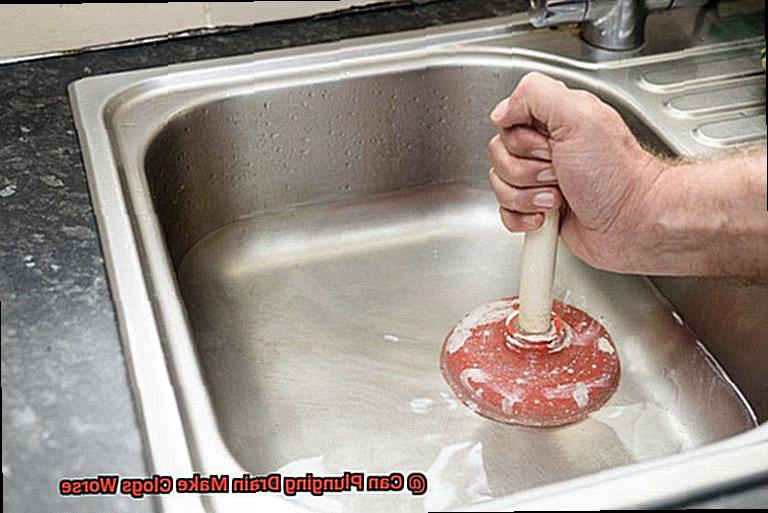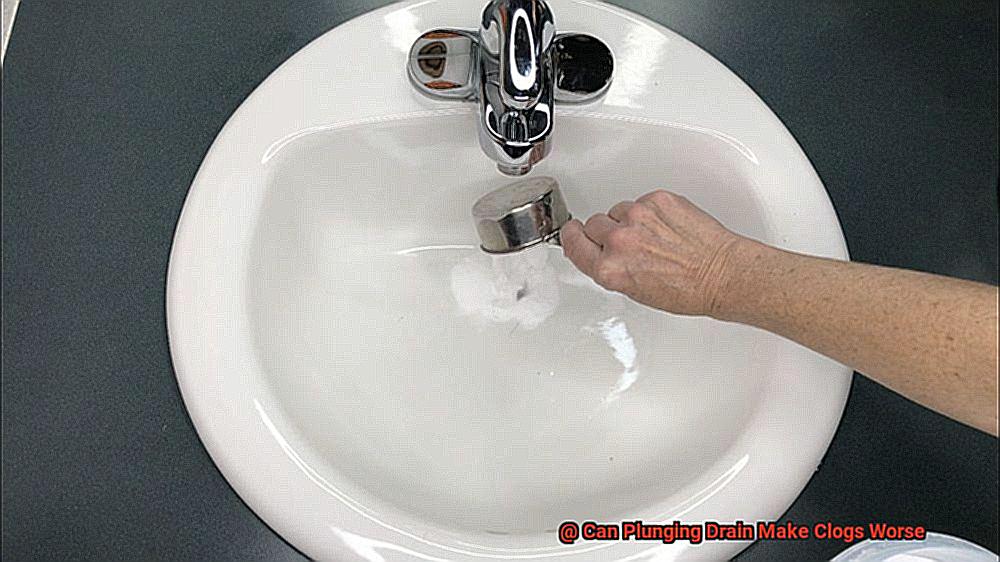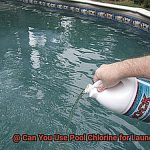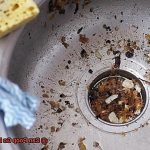Picture this: you’re preparing for a crucial day at work, and you hop into the shower to freshen up. But as you turn on the faucet, the water starts rising instead of draining. Panic sets in, and you reach for your trusty plunger, hoping to solve the problem quickly. However, little do you know that plunging a drain can sometimes worsen clogs and make them harder to remove.
Plunging may seem like an easy fix for a clogged drain, but it’s not always the solution, especially for more significant blockages. In some cases, plunging can create additional blockages or damage your pipes, leading to costly repairs.
So how can you determine when it’s safe to plunge a drain and when professional help is necessary? What steps should you take before and after plunging? In this article, we’ll explore these questions and provide valuable tips that will save you from causing more significant problems.
Whether it’s a minor blockage or a major plumbing issue, knowing how to troubleshoot your pipes effectively is crucial. Keep reading to discover the impact of plunging on drains and learn some essential techniques that will keep your pipes flowing smoothly.
Contents
What is Plunging?
Look no further than plunging. Plunging is a tried and true method for unclogging drains that requires nothing more than a rubber plunger and a little bit of elbow grease. But before you start plunging away, it’s important to understand the ins and outs of this method.
Plunging works by creating pressure and suction in the drain that can dislodge blockages. The rubber cup of the plunger creates an airtight seal around the drain opening, which allows you to push and pull the plunger to create pressure that can force the blockage through or break it apart. This method is often the first attempt by homeowners before calling in a professional plumber.
However, plunging may not always be the perfect solution. It’s important to avoid using plungers on certain types of drains, such as toilets or garbage disposals, as they can cause serious damage. Additionally, using too much force or improper technique can damage older pipes or cause them to break. And if the blockage is caused by a solid object like a toy or piece of jewelry, plunging can actually make things worse by pushing the object further down the pipe.
So when should you use plunging? It’s most effective for clogs caused by things like hair or soap scum buildup. However, if you’ve tried plunging and the clog persists, it may be time to call in a professional plumber who can remove the blockage safely and effectively without causing further damage to your plumbing system.
When Does Plunging Not Work?
First off, if the clog is located further down in the drain pipe, plunging can actually make things worse. The pressure created by plunging can push the clog further down the pipe, making it a lot harder to remove. In this case, it’s best to use a plumber’s snake or call a professional plumber for assistance, rather than attempting to force it out with a plunger.
Secondly, there are times when plunging can do more harm than good. For instance, if the clog is caused by an object that can’t be easily dislodged with a plunger, such as a toy or piece of jewelry, attempting to plunge it can potentially damage the pipes and cause the item to become even more firmly lodged in place. It’s important to avoid using a plunger in this scenario to prevent causing further damage.
Lastly, if you’ve already tried plunging multiple times without success, it’s likely that the clog is too severe for this method alone. Continuing to plunge can cause unnecessary wear and tear on your plumbing system and potentially lead to costly repairs. It’s best to seek alternative methods or professional assistance at this point.
How Can Plunging Make Clogs Worse?
If you’re dealing with a clogged drain, your first instinct might be to grab a plunger. However, it’s important to know that plunging can actually make the problem worse in some cases. Here are a few ways that plunging can cause more harm than good to your plumbing system:
One common mistake people make when plunging is applying too much force. If you’re using an excessive amount of pressure or a plunger that’s not the right size for your drain, you can actually damage your pipes. This damage can create new areas for debris to collect, leading to even more clogs down the line.
Another way plunging can make clogs worse is by pushing the blockage further down the pipe. This can happen if the plunger isn’t creating enough suction or if the clog is too large to be dislodged by the plunger. Instead of removing the blockage, you could end up pushing it deeper into your plumbing system, making it even harder to remove.

Finally, if you’ve used chemical drain cleaners before attempting to plunge, you could be setting yourself up for trouble. These harsh chemicals can cause damage to your pipes, making them more susceptible to future clogs and damage from plunging.
While plunging can be an effective method for removing some clogs, it’s important to use proper technique and tools to avoid causing more problems. If you’re unable to clear a blockage with plunging or other DIY methods, it’s best to call in a professional plumber.
What Types of Clogs are Best Suited for Plunging?
The answer may surprise you.
Plunging can be an effective method for clearing certain types of clogs, but it’s crucial to identify which ones will respond well to this method. Generally speaking, organic material – such as hair, food particles, and soap scum – are the most common culprits that can be resolved with plunging. These types of clogs tend to be softer in consistency and can often be dislodged with the suction created by a plunger.
However, more persistent clogs caused by foreign objects, mineral buildup, or tree roots are less likely to respond favorably to plunging. In fact, attempting to plunge these types of clogs can worsen the problem by pushing the blockage further into the pipes or damaging the plumbing system.
So what’s the solution? Firstly, it’s critical to use the appropriate type of plunger for the job. A cup plunger (also known as a sink plunger) is suitable for flat surfaces such as sinks and shower drains. Its flat bottom creates suction against a flat surface that helps dislodge the clog.
Conversely, a flange plunger (also known as a toilet plunger) is designed for use on curved surfaces like toilets. Its soft rubber flange fits snugly into the toilet bowl to create suction.
If you’ve tried plunging and the clog persists, it’s time to call in a professional plumber. Attempting to tackle stubborn clogs on your own can cause more harm than good. A seasoned plumber has the required tools and expertise in identifying and clearing even the most stubborn clogs without causing damage to your plumbing system.
In conclusion, plunging is an effective method for clearing certain types of clogs once they are identified. Always use the appropriate type of plunger for the job, and if in doubt, call in a professional plumber to prevent the situation from worsening.
What Types of Drains Should Never be Plunged?
When faced with a clogged drain, plunging can seem like a quick and easy solution. However, it’s crucial to know which types of drains should never be plunged to avoid causing further damage. While plunging is generally safe, it can have serious consequences if not done correctly.
Firstly, it’s important to never plunge a toilet that is already backed up. Plunging can actually push the blockage deeper into the pipes, making it even more challenging to remove and potentially causing more extensive damage. Instead, consider using a toilet auger or reaching out to a professional plumber.
Secondly, if you’ve recently used chemical drain cleaners in your sink or shower, it’s best to wait at least 24 hours before attempting to plunge. These cleaners can produce hazardous fumes when combined with the pressure of plunging, posing harm to both you and your plumbing system.
Thirdly, if you know that your drain has been previously snaked or if you suspect there is a significant obstruction like tree roots or a collapsed pipe, avoid plunging altogether. Doing so can result in further damage to the pipes and may require costly repairs.
In summary, remember to approach plunging with caution and know which types of drains should never be plunged. If you’re unsure about whether or not to use a plunger on your drain, it’s always best to seek guidance from a trusted professional plumber.
z13X3maPUAA” >
Conclusion
To sum up, plunging can be an effective way to clear certain types of clogs, but it’s important to proceed with caution and understand its limitations. If you apply too much force or use the wrong type of plunger, you could actually make the clog worse by pushing it further down the pipe or damaging weakened pipes.
It’s crucial to identify which types of clogs are best suited for plunging. Organic material like hair, food particles, and soap scum typically respond well to this method. However, more stubborn clogs caused by foreign objects or mineral buildup may require professional assistance.
Furthermore, it’s essential to know which drains should never be plunged to avoid causing additional damage. Toilets and garbage disposals are two examples of drains that should be off-limits for plungers.
If you’re unsure about whether or not to use a plunger on your drain, don’t hesitate to seek guidance from a trusted professional plumber. They can help you determine the best course of action based on the specific circumstances of your clog.
In conclusion, while plunging can be a cost-effective and straightforward solution for clearing certain types of clogs, it should always be used in conjunction with other methods if necessary.






